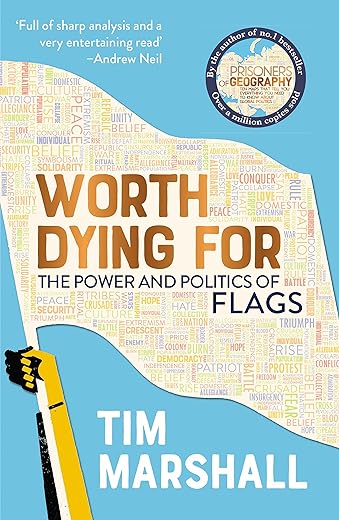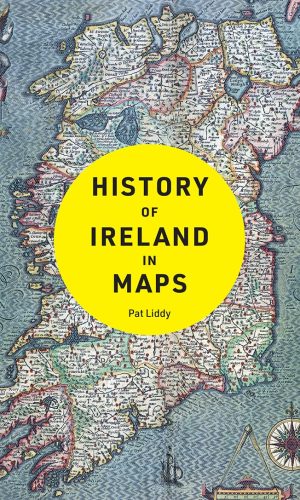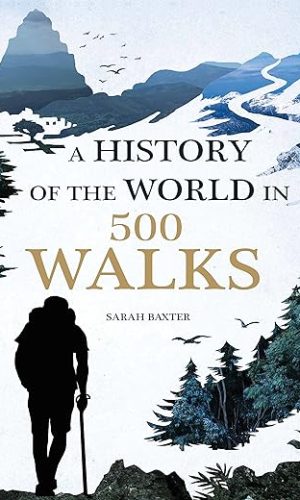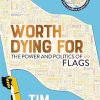Worth Dying For: The Power and Politics of Flags
£1.90
In his gripping new book The Future of Geography: How Power and Politics in Space Will Change Our World, Marshall digs deep into the past, present and future of the new ‘astropolitics’ that are set to change the face of life on Earth. Available to PRE-ORDER NOW in hardback, ebook and audio – out 27th April 2023
When you see your nation’s flag fluttering in the breeze, what do you feel?
For thousands of years flags have represented our hopes and dreams. We wave them. Burn them. March under their colours. And still, in the 21st century, we die for them. Flags fly at the UN, on the Arab street, from front porches in Texas. They represent the politics of high power as well as the politics of the mob.
From the renewed sense of nationalism in China, to troubled identities in Europe and the USA, to the terrifying rise of Islamic State, the world is a confusing place right now and we need to understand the symbols, old and new, that people are rallying round.
In nine chapters (covering the USA, UK, Europe, Middle East, Asia, Africa, Latin America, international flags and flags of terror), Tim Marshall draws on more than twenty-five years of global reporting experience to reveal the histories, the power and the politics of the symbols that unite us – and divide us.
Read more
Additional information
| Publisher | Elliott & Thompson (22 Sept. 2016) |
|---|---|
| Language | English |
| File size | 13152 KB |
| Text-to-Speech | Enabled |
| Screen Reader | Supported |
| Enhanced typesetting | Enabled |
| X-Ray | Enabled |
| Word Wise | Enabled |
| Sticky notes | On Kindle Scribe |
| Print length | 341 pages |










by boogalouie
So taken with Marshall’s ‘Prisoners of Geography’ work that I ordered this while still in full flow of the first. You may have thought Prisoners to be reasonably comprehensive and certainly it was eye opening, this great follow up read brought yet more little historic and anecdotal gems to our attention.
Being sensitive or blunt depending on subject, Marshall has a refreshing tongue in cheek style that brightens up what could be dull yet informative moments. Much time has been given to research and seeking out those people who were involved in certain flags’ development.
I was delighted to find a comprehensive section on South American countries, an area which is often hard to find within such texts and was certainly absent in Marshall’s Prisoners of Geography. Their fascinating history has been introduced to us here, with their flags.
Yes, it could be said that much of this work could have been done during Marshall’s working life, but thankfully he did collate and present minutiae that is intriguing. It is in my view, among the better modern day anthropological works and as such, will be a valid read for a long time and will also give a good account of how we were at the time of its being written.
There is a minor error with editing though. The central glossy pages show the flags mentioned in full glowing colour. It is compelling to follow these while reading the text. One flag’s country has been mis-named, which is unfortunate. But – this has been an editing error and should not interrupt your enjoyment of the body of work.
by A. Fletcher
Excellent gives clear understanding of the situation around the world. Sadly is very weak on Africa. It makes no mention of Mozambique’s mining boom and hence no mention of over 900km rail line from Moatize in Mozambique running through Malawi and again Mozambique to the deep water port at Ncala. Built by Brazil’s Vale & Mitsui it was inaugurated in May 2017 together with the port. This can handle Cape size vessels (180.000 tonne capacity) without dredging being required. The line is already running 22 trains per day each hauling 10,000tonnes.
No mention either is made of the agreement between Botswana & Namibia that commenced planning in 2010 for a 1,500 Km rail line across both countries to Walvis Bay. He also does not comment on BRICS ( Brazil, India, China & South Africa) cooperation agreement that is setting up a Trade Bank and other developments. So sadly as I said very weak on Africa.
by C Mould
Bought as a present but seem ok
by Old Ben
After reading ‘Prisoners of Geography’ I was optimistic that anything by TM would be edifying, as indeed this is, but this book has put me off the whole idea of flags except for odd occasions when it’s necessary temporarily to identify a group or individual. Their appeal is unwholesome and, in a Christian context, seems idolatrous. I would have welcomed some investigation into the psychology behind the appeal of flags rather than such detailed history of their various colours and emblems. As he says, a fully comprehensive volume would need to be larger than this book allowed, but if he found space for the Red Cross, he could have found just a little space for the Esperanto flag which has a very interesting history and is, perhaps, one of the very few with no blood staining its folds.
by Rod Crowder
(Caveat – my comments relate to the Kindle edition)
For a book that is so centred on flags and their power as images, closer integration between the text and the plates would improve things. A link to the plate displaying the image would be relatively simple to implement; I am surprised that a printed note wasn’t already in the text!
It’s only the lack of links that stop me giving 5 stars
by Mr. E. Spencer
It’s ok. This book is nowhere near as interesting as Marshall’s previous book “Prisoners of Geography”. Some chapters are fairly insightful – for example the chapter about the flags in use in the United States, and how some groups have hijacked some flags. However, this chapter contains mind numbingly uninteresting dissections over inane details of some flags. This unfortunately happens in every chapter.
The chapter about European flags is dull and disjointed. After an uninteresting look over some minor detail of some European flag, the next paragraph will clumsily move onto another country’s flag in what can only be described as the opposite of a segue. It also does not cover all European flags, just a seemingly random subset.
This chapter also contains a few irritating careless statements, such as “the rise of Islam in Europe” and “mass migration in Europe”. Statements of this weight demand backing up with some basic numbers – something that Marshall neglects to do. The fact that they are not can be taken as a reflection of the paranoia that we see here in Europe.
There are some interesting historical tidbits that can be taken away from the text – for example the British and the French involvement in the Arab world and it’s borders. It’s worth noting that Mauritania fails to be recognised as an arab state by Marshal, but Turkey is for some reason.
On the whole, this book is ok but could be a lot more concise. It serves up some good nuggets of historical fact, but much of this is diluted by uninteresting discussions over small flag details. I was hoping it would be a look into the people that stand behind flags, and what they mean for them, but it wasn’t.
by Amber Smithwhite
Lovely illustrated flags of the world in full colour, the best one being Wales with the green, white background and the lovely red dragon to the fore. However, the second best flag of all is missing from this book. The flag of the Australian Aborigines with the Red for the earth, black for the people upon it and the yellow circle in the middle representing the sun. This flag was designed by an Aborigine, for his people, and their land, in late 1960s / very early 1970s.